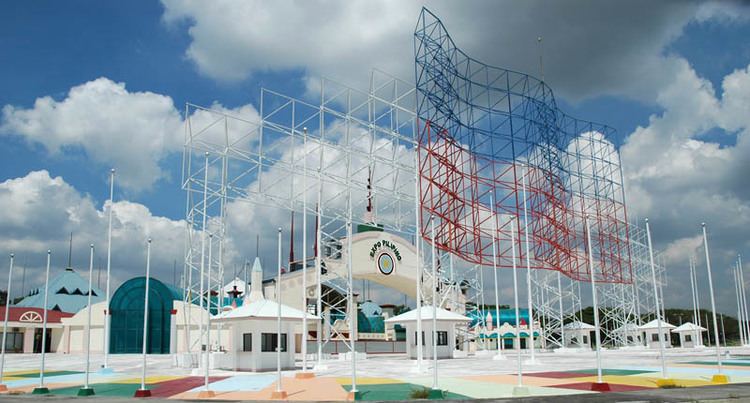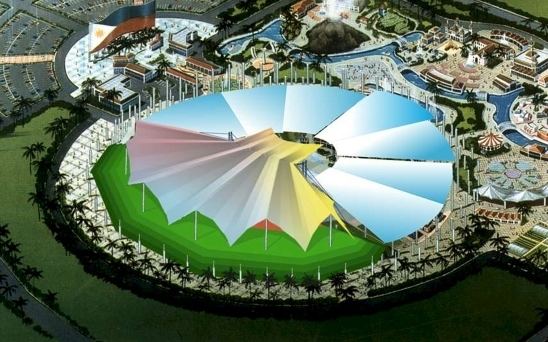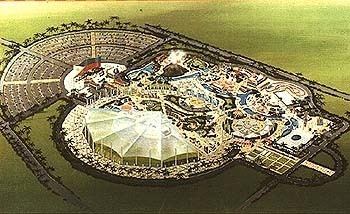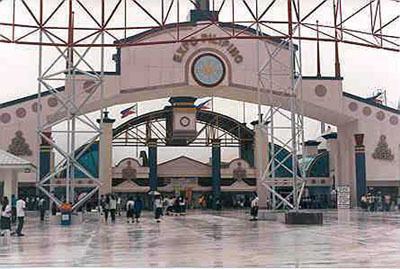 | ||
BIE-class Unrecognized exposition Name Philippine Centennial Exposition, Expo Filipino Building(s) Freedom Ring Organizations 150 Country Philippines City Mabalacat Venue Expo Filipino Site, Clark Special Economic Zone Coordinates 15°12′18.6″N 120°31′38.5″E Similar Levant Fair, Colonial Exhibition of Semarang, Shanghai Expo Park | ||
Clark expo pilipino today
Expo Pilipino (now Clark Expo) was the Philippine National Centennial Exposition and centerpiece of the commemoration of the 100th anniversary of the declaration of Philippine Independence on June 12, 1898. The 60-hectare heritage and entertainment park in Clark Freeport Zone, Angeles City is a celebration of the Filipino history, culture, and achievements in the past century and aspirations for the third millennium.
Contents
- Clark expo pilipino today
- Mtb sta ana pampanga riders expo pilipino avi
- Description
- Budget
- Issues
- Reopening
- References

The site was a project of the National Centennial Commission (NCC) and the Philippine Centennial Exposition Corporation.
Mtb sta ana pampanga riders expo pilipino avi
Description

It has a 35,000-seat amphitheater. In addition, the site is also the new home for the 45-acre (180,000 m2) Nayong Pilipino complex, an open-air museum featuring miniature attractions of the Philippines and its culture.

In early 2010, the site was relaunched as Clark Education City by the Australian International Training and Management group (AITMG). Initial construction of the campus cost AU$6-million, with a capacity of 15,000 students. The institution delivers a range of vocational courses accredited by the Australian Government, English language, and customised training. The facility now operates as Site Skills Training - [1].
Budget
The construction of Expo Filipino entailed a total budget of ₱3.5 billion (US$ 63.64 million). Then-President Fidel V. Ramos directed three state-run financial institutions—Social Security System (SSS), Government Service Insurance System (GSIS), and Land Bank of the Philippines—to lend a total of ₱1.4-billion (US$25.45-million) to the joint venture.
Issues

The project was criticised for the excessive amounts of money that went to its construction. Particular targets of criticism were: a "Freedom Ring" (>₱1.2-billion); a parking lot (₱111-million); an entry zone (₱118-million); display villages (₱290-million); and an artificial river (₱76-million) that had bridges spanning it (total ₱32-million).
Expo Filipino closed down in 1999 under President Joseph Estrada, after sustaining heavy losses.
Reopening

After having been mothballed for more than five years, the site reopened as Clark Expo on December 8, 2005, to host trade exhibits and cultural presentations headed by the Clark Development Corporation (CDC). The park's reopening featured concerts, world-class furniture exhibits, carnival rides, and major concerts.
The inauguration of Expo Pilipino was made possible through the directive and comprehensive backing of President Gloria Macapagal-Arroyo, aimed at enhancing tourism and investment ventures within the Clark Special Economic Zone. This initiative was formalized with her issuance of Administrative Order (AO) No. 63 on February 17, 2003, which mandated the transfer of specific assets and liabilities from the National Development Company (NDC) to the Clark Development Corporation (CDC) in the First Clark Centennial Corporation (FCCC), as stated by CDC president Antonio Ng.
In connection with the reopening of the park was the Clark National Duathlon Championships on December 19, and the holding of the annual district assembly of some 10,000 members of Jehovah’s Witnesses in Pampanga and Tarlac on December 23-25. CDC spent some ₱2.5-million for the rehabilitation of the on-site replica of Barasoain Church, an amphitheatre, trade halls, and convention centres.
